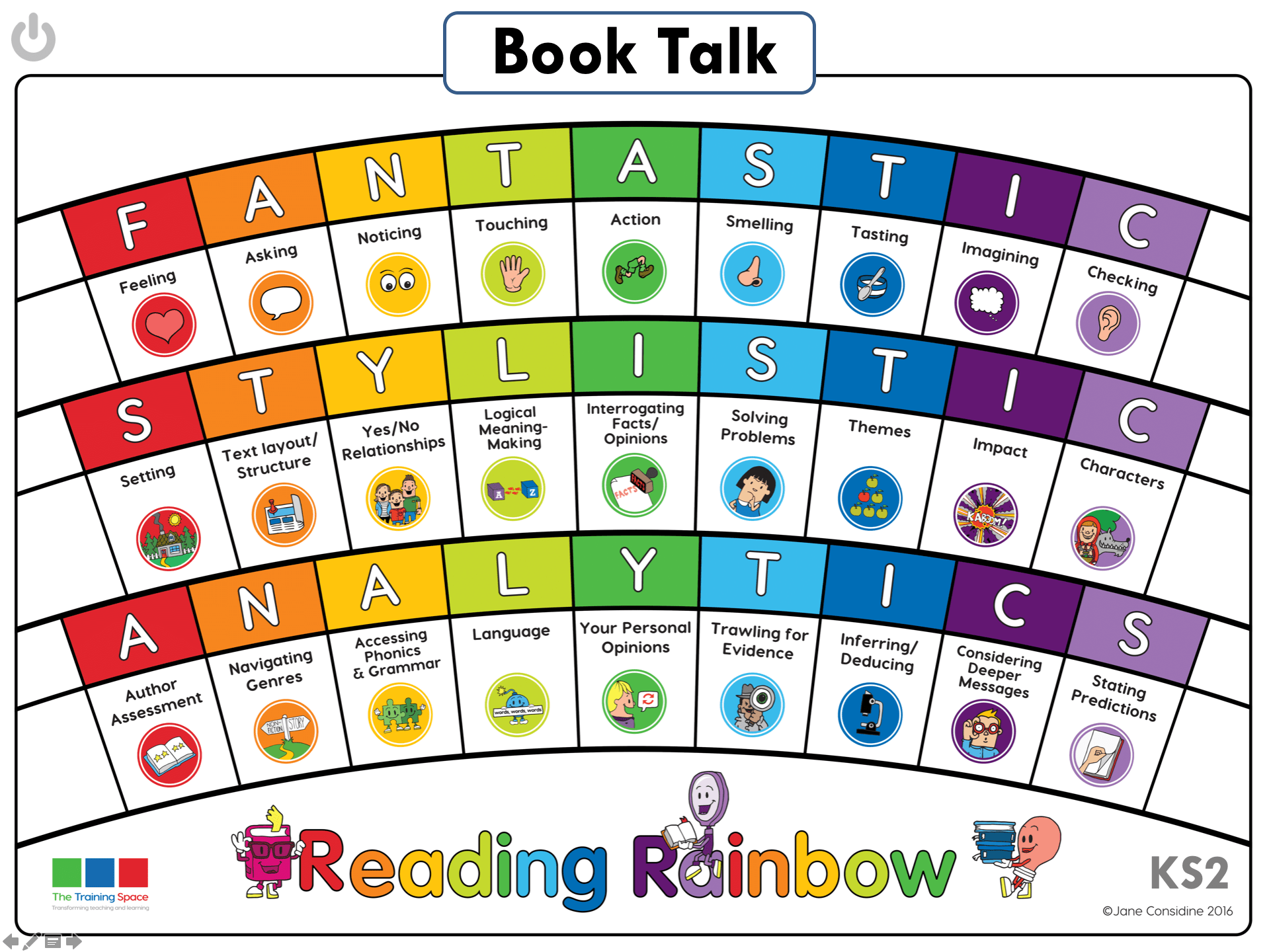Reading Detectives
Phonics is a key part of children learning to read. However, alongside this we also teach Reading Detectives. This involves teaching children to think about and reflect on what they have read. To ask questions and make predictions about what might happen next. It also looks at character development, plot and setting. At the earliest stages in Reception we start by looking closely at wordless pictures. What can we see? Why is it there? Who are the people? What might happen next? Developing fluency in asking questions and being curious allows children to fall head first into a story, helping them on their journey to become life-long readers. Our Reading detectives books are carefully selected to support teaching in the wider curriculum throughout the year.
Take a look at our long term overview below:

The Reading Rainbow
To Support the Scheme we use for writing which is 'The Write Stuff' we support our reading detectives sessions with lenses from the Reading Rainbow.

The long term overview for how these are used is shown below:

